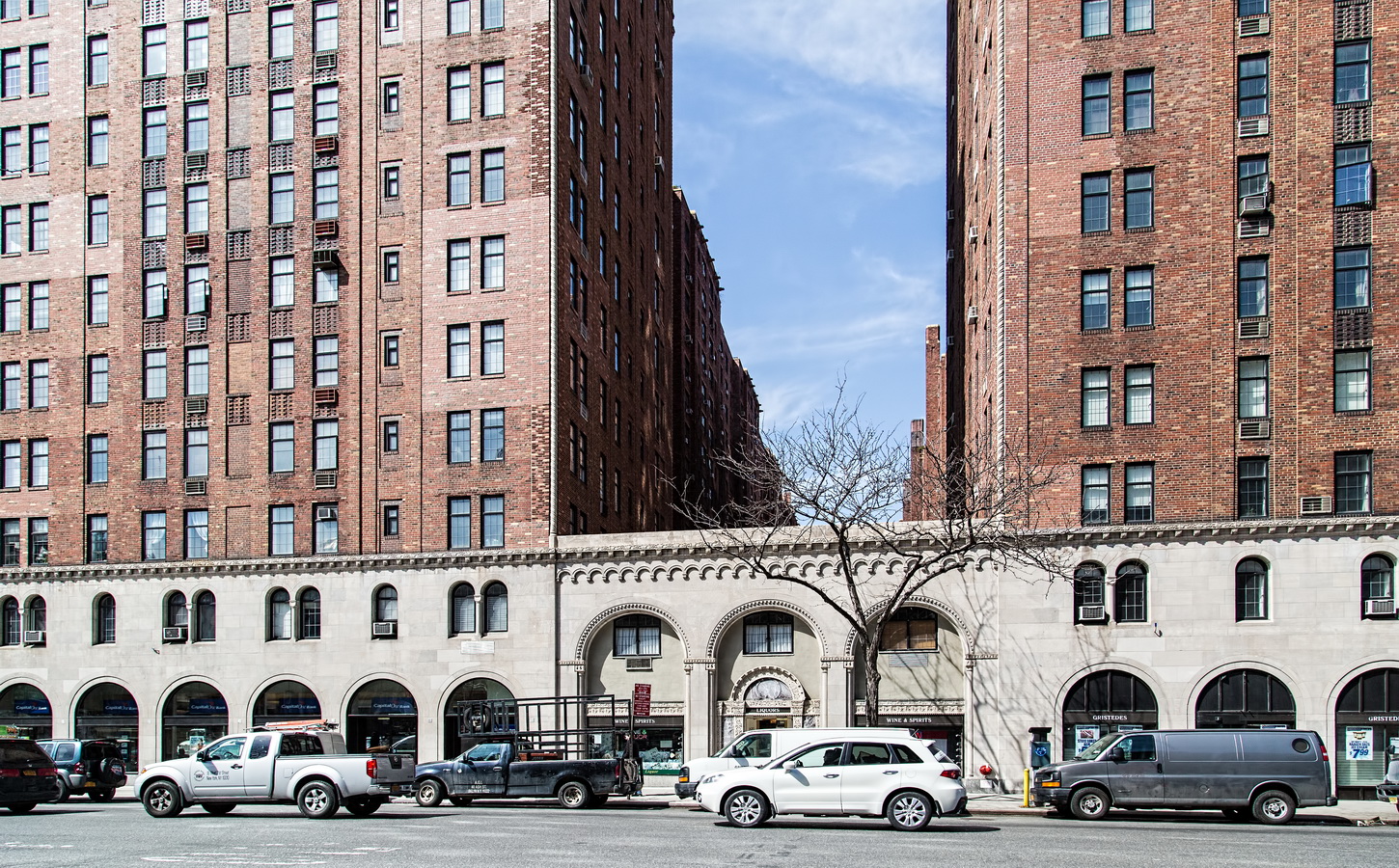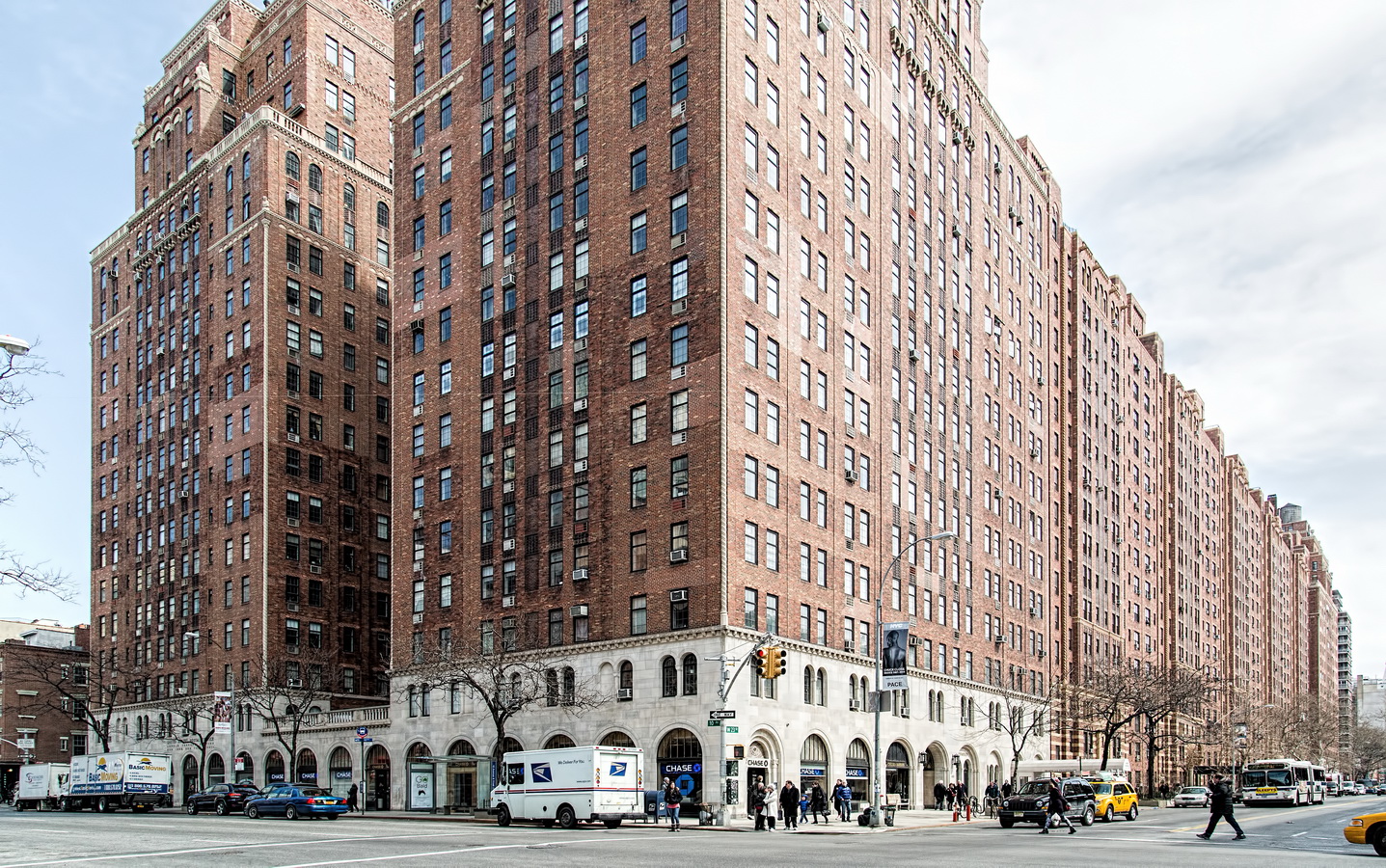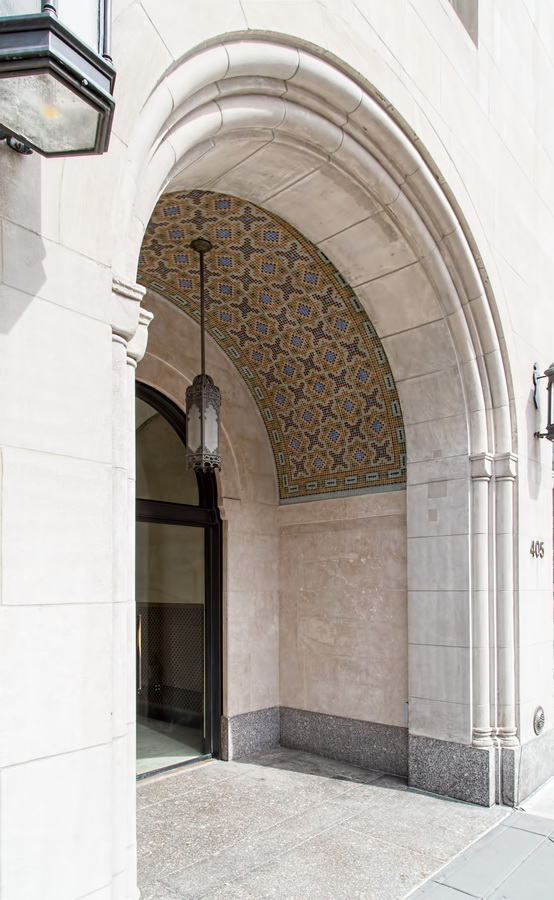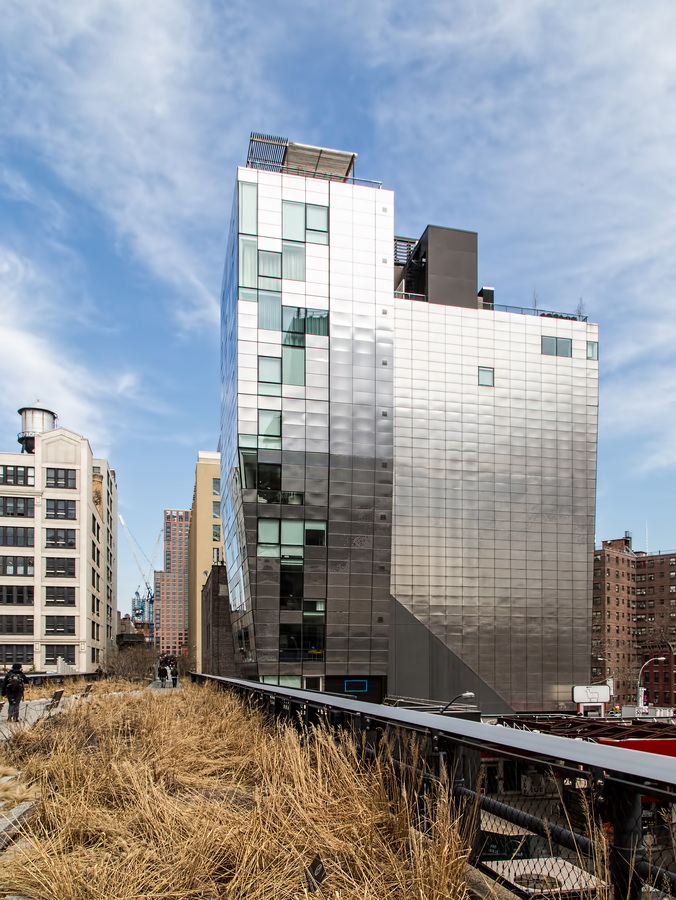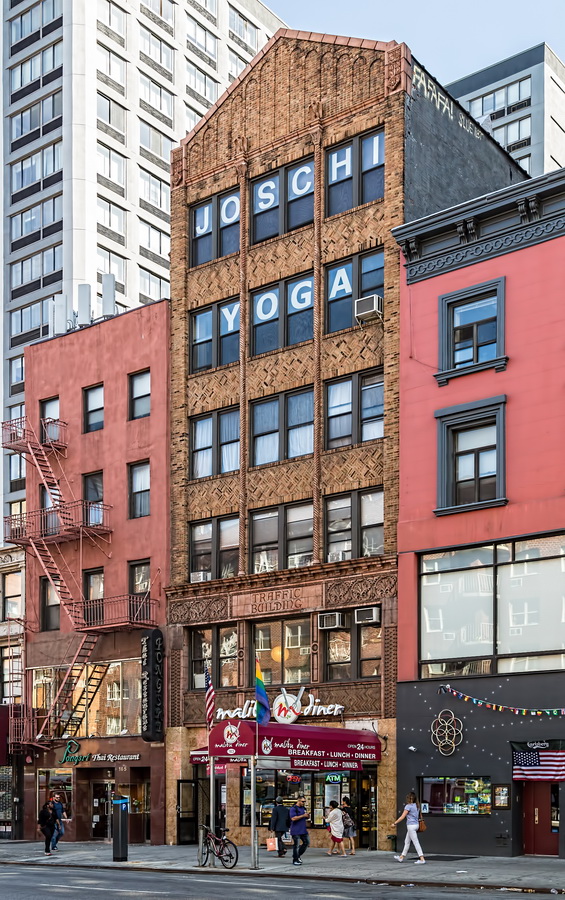London Terrace shows that “timing is everything” can trump “location, location, location.” This whole-block residential development of Henry Mandel (“the Donald Trump of the 1920s”) had the bad luck of being built just as the country fell into the Great Depression. The 14-building, 1,670-unit project bankrupted Mandel and slipped into foreclosure. Just across Ninth Avenue – but built three decades later – the 10-building, 2,820-unit Penn South complex had a considerably easier life.
To be fair, the Penn South co-op had the backing of the then-giant International Ladies Garment Workers Union and a 25-year New York City tax abatement, advantages unavailable to London Terrace.
Mandel’s ambitious Chelsea complex – the city’s then-largest – included a central courtyard closed at the ends by a large indoor pool on Tenth Avenue and a restaurant on Ninth Avenue. In addition, there were separate rooftop exercise and recreation areas for children and adults, a telephone message center, page boys to run errands and other amenities that the rich were accustomed to. Yet the buildings were not for the rich: Most apartments were studio or one-bedroom units – no servants rooms here!
After the financial dust settled, London Terrace split into two developments with somewhat scaled-back amenities. The four corner buildings, dubbed London Terrace Towers, were converted to co-ops in 1986. The 10 mid-block buildings are known as London Terrace Gardens, and are still rental apartments. The pool and rooftop facilities are still in use.
The Tuscan architectural style, detailed and multi-colored, breaks up what could otherwise be a bleak and monolithic monster.
Some online accounts claim that Mandel jumped from the roof of London Terrace in 1934 after declaring bankruptcy. Good drama, but not true. His 1942 New York Times obituary reports that he died at Lenox Hill Hospital on October 10, 1942 after a short illness.
If you’re looking for drama, look no further than the story of Tillie Hart: She refused to move for the bulldozers, claiming her house’s sublease had another year to run. Even after losing court battles, Ms. Hart reportedly barricaded herself until sheriffs forcibly removed her belongings to the sidewalk.
The most recent drama was a battle over rights to use the swimming pool.
London Terrace Vital Statistics
- Location: W 23rd to W 24th Street, Ninth to Tenth Avenue
- Year completed: 1931
- Architect: (Victor) Farrar & (Richard) Watmough
- Floors: 22
- Style: Tuscan
London Terrace Recommended Reading
- Wikipedia entry
- Daytonian in Manhattan blog
- City Realty review
- The New York Times A Restoration Revealed Piece by Piece (July 8, 2011)
- The New York Times Streetscapes: London Terrace; Time Erodes Unity of a 1,665-Unit City Within a City (October 30, 1988)
- The New York Times Chelsea Complex Divided Over Rare Indoor Amenity (February 17, 2014)
- The New York Times Henry Mandel, 58, Realty Man, Dies (October 11, 1942)
- Emporis database
- London Terrace Towers (the four co-op buildings) website
- London Terrace Gardens (the 10 rental buildings) website
- New York’s Fabulous Luxury Apartments: With Original Floor Plans from the Dakota, River House, Olympic Tower and Other Great Buildings
- Luxury Apartment Houses of Manhattan: An Illustrated History (Dover Architecture)



